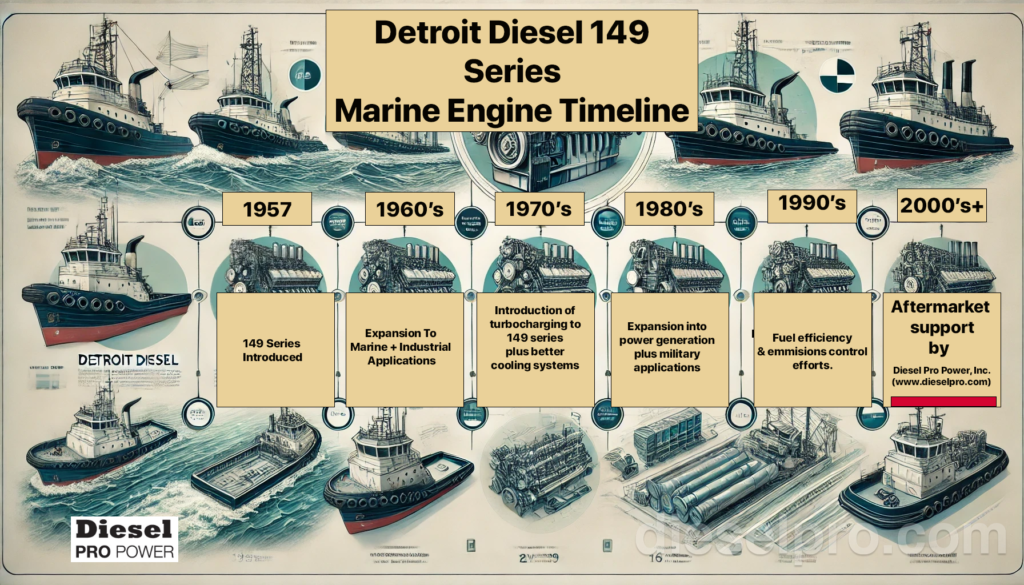Understanding the Two-Cycle Diesel Principle In Detroit Diesel 149 Series Engines (8V149, 12V149, 16V49)
Two -Stroke Cycle Overview For Detroit Diesel 149 Series Engines (8V149, 12V149, 16V149)
Compression and Power Stroke For The Detroit Diesel 149 Series (8V149, 12V149, 16V149)
Airflow and Scavenging Process For The Detroit Diesel 149 Series (8V149, 12V149, 16V149)
Key Components in Combustion For Detroit Diesel 149 Series Engines (8V149, 12V149, 16V149)
Blower: Role in Air Intake and Maintaining Cylinder Pressure For The Detroit Diesel 149 Series (8V149, 12V149, 16V149)
Exhaust Valves: Function in Releasing Exhaust Gases and Preparing for the Next Intake For The Detroit Diesel 149 Series (8V149, 12V149, 16V149)
Fuel Injectors: Importance in Delivering Fuel at the Right Pressure and Timing For The Detroit Diesel 149 Series (8V149, 12V149, 16V149)
Performance Benefits Of The 2-Cycle Design (8V149, 12V149, 16V149)
1. Higher Power Density and Efficiency For The Detroit Diesel 149 Series (8V149, 12V149, 16V149)
2. Simplified Mechanical Design with Fewer Moving Parts For The Detroit Diesel 149 Series (8V149, 12V149, 16V149)
3. Enhanced Durability in High-Load Applications For The Detroit Diesel 149 Series (8V149, 12V149, 16V149)
4. Improved Scavenging and Cooling Efficiency For The Detroit Diesel 149 Series (8V149, 12V149, 16V149)
5. Adaptability to Demanding Environments For The Detroit Diesel 149 Series (8V149, 12V149, 16V149)
6. Fuel Flexibility and Efficiency For The Detroit Diesel 149 Series (8V149, 12V149, 16V149)
Read More




 Free US Calls: 1-888-433-4735
Free US Calls: 1-888-433-4735 International: 305-545-5588
International: 305-545-5588


